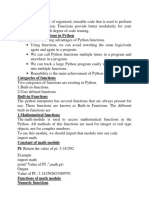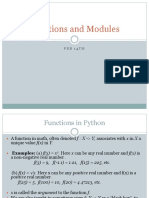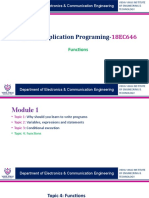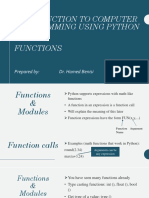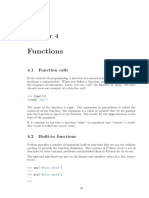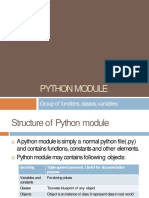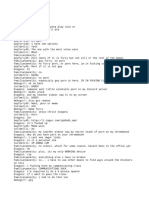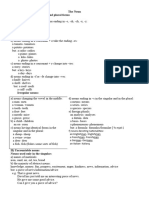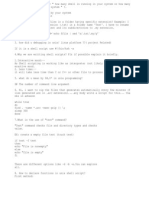0% found this document useful (0 votes)
29 views7 pagesCP104 - Chapter 5 Functions
The document discusses functions in Python. A function is a block of code that performs a specific task and can be called multiple times. Functions allow for code reusability and modular programming. Arguments can be passed into functions, which are received as parameters. The math module contains many mathematical functions like square root, logarithms, trigonometric functions, and constants like pi. Functions must be defined before being called.
Uploaded by
juliamicic10Copyright
© © All Rights Reserved
We take content rights seriously. If you suspect this is your content, claim it here.
Available Formats
Download as DOCX, PDF, TXT or read online on Scribd
0% found this document useful (0 votes)
29 views7 pagesCP104 - Chapter 5 Functions
The document discusses functions in Python. A function is a block of code that performs a specific task and can be called multiple times. Functions allow for code reusability and modular programming. Arguments can be passed into functions, which are received as parameters. The math module contains many mathematical functions like square root, logarithms, trigonometric functions, and constants like pi. Functions must be defined before being called.
Uploaded by
juliamicic10Copyright
© © All Rights Reserved
We take content rights seriously. If you suspect this is your content, claim it here.
Available Formats
Download as DOCX, PDF, TXT or read online on Scribd
/ 7



